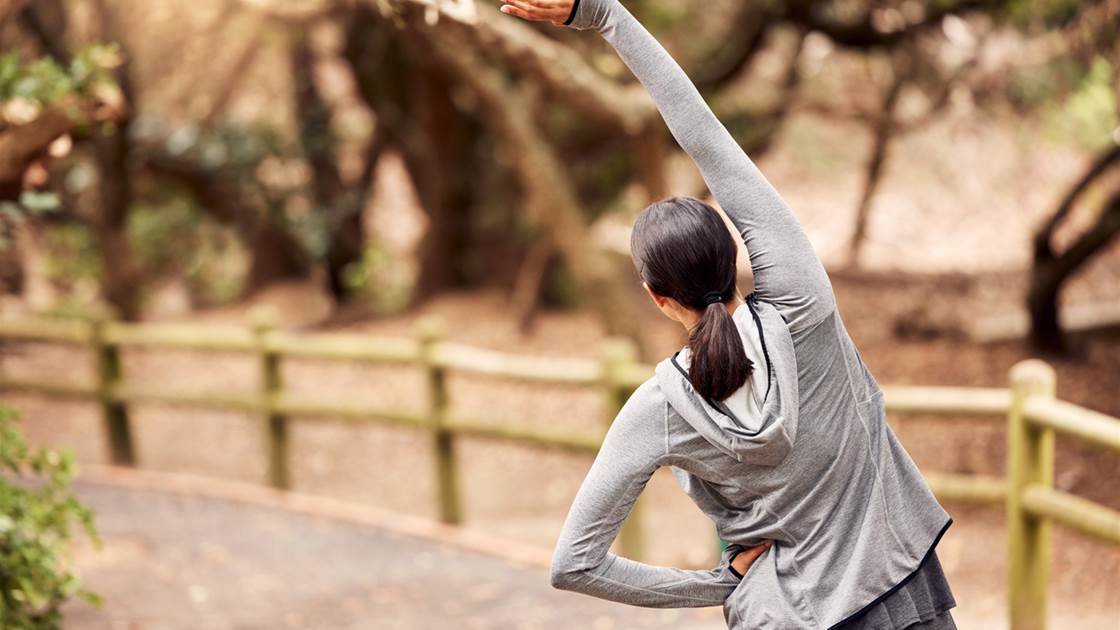WALKING HAZARD: SLOUCHING AND SLUMPING
“Many walkers get hurt because they don’t walk erect,” says race-walking coach Bonnie Stein. The two most common posture problems? Walking bent over with your head down or leaning back. Either way, straying too far from upright throws your body off balance, putting undue stress on your lower back, says Stein. The result? Strain and pain.
Quick Fix: Realign your spine
To straighten up, hold your head high, so your neck and spine form a straight line. Don’t tuck your chin into your neck; look well ahead of you. (Experts’ advice on the distance ranges from 3 to 9 metres ahead.) Also, suck your stomach in, brace your core and relax your shoulders. One way to check yourself, says Stein, is to take a big breath every five minutes and exhale strongly. Notice how your shoulders drop? That’s where you want them to be when you walk.
WALKING HAZARD: TAKING GIANT STEPS
Taking too long a stride actually slows you down, because extending a heel too far in front of your body generates no forward propulsion. And when you stretch your foot out in front of you, it acts like a brake; you can’t easily roll from heel to toe, as you should, to power the forward motion.
Quick Fix: Take a measured step
To determine just how long your stride should be, stand up straight and extend one foot a few centimetres in front of you, with your heel not quite touching the ground. Start to fall forwards slowly; your extended heel will hit the ground and stop you. That’s where your front foot should be with each step, says Stein.
WALKING HAZARD: SKIPPING THE WARM UP
Sure, diving straight into your workout saves time, but you’ll pay sooner or later (cue ominous music), especially if you make a habit of it. Starting at a breakneck pace only increases the odds that you’ll fizzle out before you’ve covered much ground. It also leaves you sore and vulnerable to a whole host of injuries, says race-walking coach Jake Jacobson, author of Healthwalk to Fitness.
Quick Fix: Shift gears gradually
Spend the first five minutes of your walk in stroll mode, advises Jacobson. This increases blood flow to your leg muscles and warms them up, which is important for protection from injuries. Once you’re warmed up, slowly increase your pace.
WALKING HAZARD: CULLING THE COOL DOWN
Ditching the all-important cool down and skipping the stretching phase can leave you feeling temporarily faint and rob you of invaluable flexibility.
Quick Fix: Slow down to cool down
Spend the last five to 10 minutes of your walk back in stroll mode. “Any time you’ve walked vigorously enough to elevate your heart rate, it’s essential to let your body cool down gradually,” says Stein. If you stop suddenly, all of the extra blood that’s pumping into your leg muscles can pool there, leaving you feeling dizzy and overheated. Follow your cool down with some basic stretches, so your muscles don’t get stiff and tight, adds Bach.










